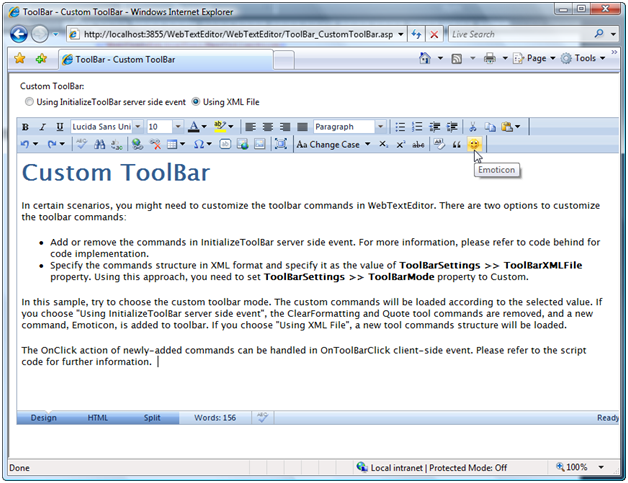WebTextEditor provides a property to add custom toolbar using xml file.
In this topic, you will learn how to add custom toolbar.
To add custom toolbar using xml file
- Create an xml file that contains WebTextEditor’s toolbar collection, such as following:
<WebTextEditorToolBarCollection>
<WebTextEditorToolBar Name="WebTextEditor1_tbCustom" Category="Custom" Text="Custom 1">
<ToolCommands>
<WebTextEditorToolCommand Name="cmdChangeCase" Text="Change Case" CommandType="ChangeCase" DisplayMode="TextAndImage" Image=" tb_changecase.gif" Type="SplitButton">
<Items>
<WebTextEditorToolItem Name="itemUpperCase" Text="UPPER CASE" Image="tb_uppercase.gif" />
<WebTextEditorToolItem Name="itemLowerCase" Text="lower case" Image=" tb_lowercase.gif" />
</Items>
</WebTextEditorToolCommand>
<WebTextEditorToolCommand Name="cmdEmot" Type="ToggleButton" Text="Emot" DisplayMode="Image" Image="smiley.gif">
<Items />
</WebTextEditorToolCommand>
</ToolCommands>
</WebTextEditorToolBar>
</WebTextEditorToolBarCollection>
- Under ToolBarSettings, set ToolBarMode to
Custom.
- Define the xml file you have created in ToolBarXMLFile
property.
